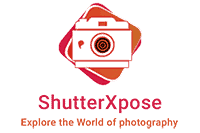P hotography means an art or process of producing pictures by the action of light. To get a good sharp picture, three main elements which needs to be considered are Aperture, Shutter Speed and ISO.
hotography means an art or process of producing pictures by the action of light. To get a good sharp picture, three main elements which needs to be considered are Aperture, Shutter Speed and ISO.
Exposure = Aperture + Shutter Speed + ISO
Generally DSLR beginners let their cameras in Auto mode to determine exposure. The camera won’t always get it right and you may end with undesired (underexposed or overexposed) picture.
How Aperture and Shutter Speed helps to determine Exposure
Aperture is primarily used to change the depth of field, and shutter speed is used to blur or freeze motion. Aperture is also a measure of how wide the lens opens when you take a photo. Shutter speed is how long the shutter stays open. Both of these settings affect the amount of light hitting the camera’s image sensor, and this is what determines exposure.
When the correct amount of light hits the image sensor of your camera, you get a photograph that is correctly exposed.
Less light ————– Image UnderExposed
More Light ————- Image OverExposed
Relationship between Aperture and the amount of light in layman term:
Small f-stop number = Plenty of light
Large f-stop number = Minimal light
Let’s understand this further with actual f-stop numbers in your camera:
f4.5 (wide open) = Large amount of light
f8.0 (less open) = Medium amount of light
f22 (almost closed) = Small amount of light
In general if you have your aperture set to a small number (ignoring shutter speed for now) a lot of light is going to get into the camera. When you are shooting in low-light conditions (at dusk, for example) you will have no choice but to set the aperture wide open to capture as much light as possible.
When you are shooting in bright conditions, you have more flexibility to change the aperture (since you can let in less light and still get a good photograph). You can set the aperture to a high number and let in less light as a result.
How does Shutter Speed act relative to the amount of light?
Let’s understand the relationship between shutter speed and amount of light:
Slow Shutter Speed = More amount of light
Fast Shutter Speed = Less amount of light
Like f numbers for Aperture, Shutter speed is denoted in fraction such as 1/60 second. However to save space, shutter speeds are denoted by just their denominator, such as 60. A typical sequence of shutter speed on a camera run from slowest to fastest: 1, 2, 4, 8, 15, 30, 60, 125, 250, 500, 1000.
The shutter speed determines the amount of motion blur a moving object will have in your final picture. Use a fast shutter speed (such as 1/500 sec) to freeze fast moving objects in their trajectory, or use a slow shutter speed (such as 1/2 sec) to illustrate movement by creating motion blur.
Like f-numbers, the difference between each shutter speed setting is twice the amount of light. For example, shutter speed 1/60 sec lets in twice as much light as 1/125 sec.
Again, let’s say that you are only adjusting your shutter speed and ignoring aperture. In low-light conditions, you will have to use a slower shutter speed to capture enough light for a good exposure. In bright conditions, you can use a range of shutter speeds, but may not be able to use slow shutter speeds since this will let in too much light.
So far, we have just gone over changing either the aperture or the shutter speed and not worrying about the other. Well, the truth is that you can manipulate both to achieve a correct exposure.
How this works:
Due to the doubling/halving nature of both aperture and shutter settings, closing the aperture one stop (halving the light) while simultaneously decreasing the shutter speed by one setting (doubling the light) produces no effective change in the amount of light reaching your film. The same is true for closing the aperture two stops while decreasing the shutter speed by two settings. This means there are several aperture and shutter settings which produce the same overall exposure of your final picture. For example, the combination f/4 and 1/60 sec produces the same overall exposure as f/2.8 and 1/125 sec, or f/5.6 and 1/30 sec. This is not to say these settings will produce the same final picture since the combination you choose will determine the depth of field surrounding your subject (aperture size) and the amount of motion blur of moving objects (shutter speed).
What is ISO ?
This is the last factor which affects exposure. ISO is an term to define or measure the sensitivity of light. This is both true to film and digital photography. In modern camera, ISO is used to measure the light sensitivity enterring or exposed to the camera sensor. The more sensitive your film or sensor, the less light needs to be captured to record the image. ISO sensitivity also affects noise or grain. The higher the ISO, the grainier/noisier the image will be. But higher ISO also allows you to shoot with faster shutter speeds in low light, an option that is preferred by many photographers over using a flash.
The most common ISO camera speed settings are: 100, 200, 400, 800, 1600 (Some camera’s have fewer or more speed, please check your camera manual for more information).
The lower the ISO number, slower the speed and minimal noise (grainy), typically higher the ISO number, faster the speed and more noise (grainy).


